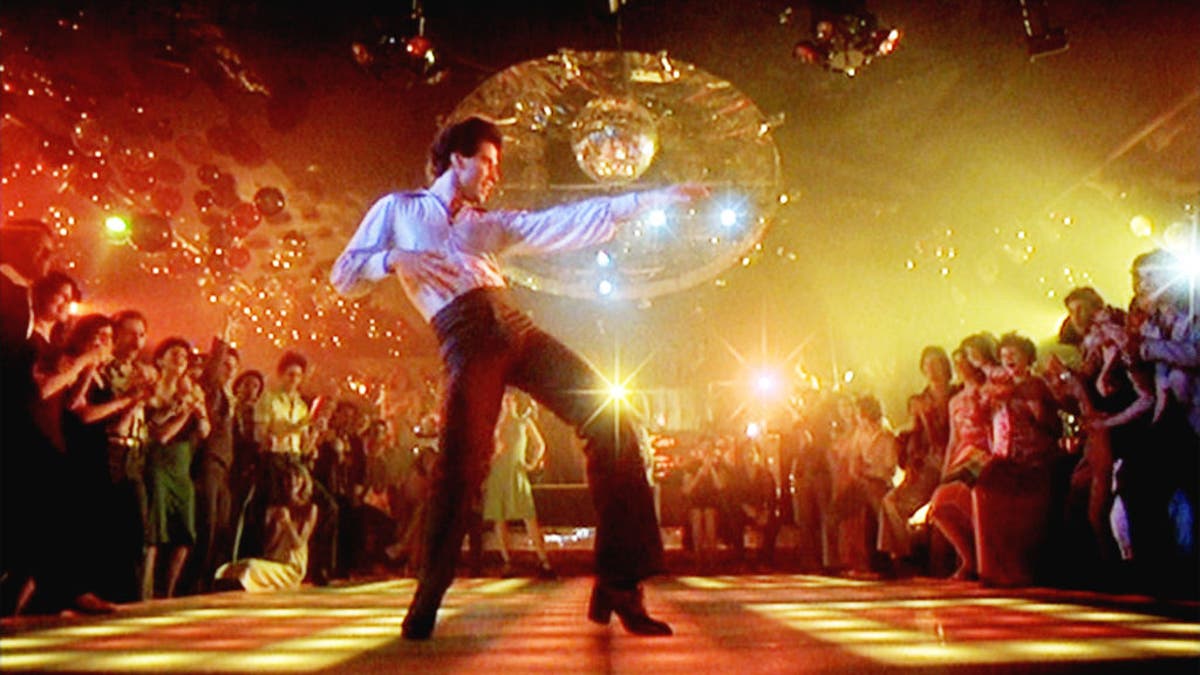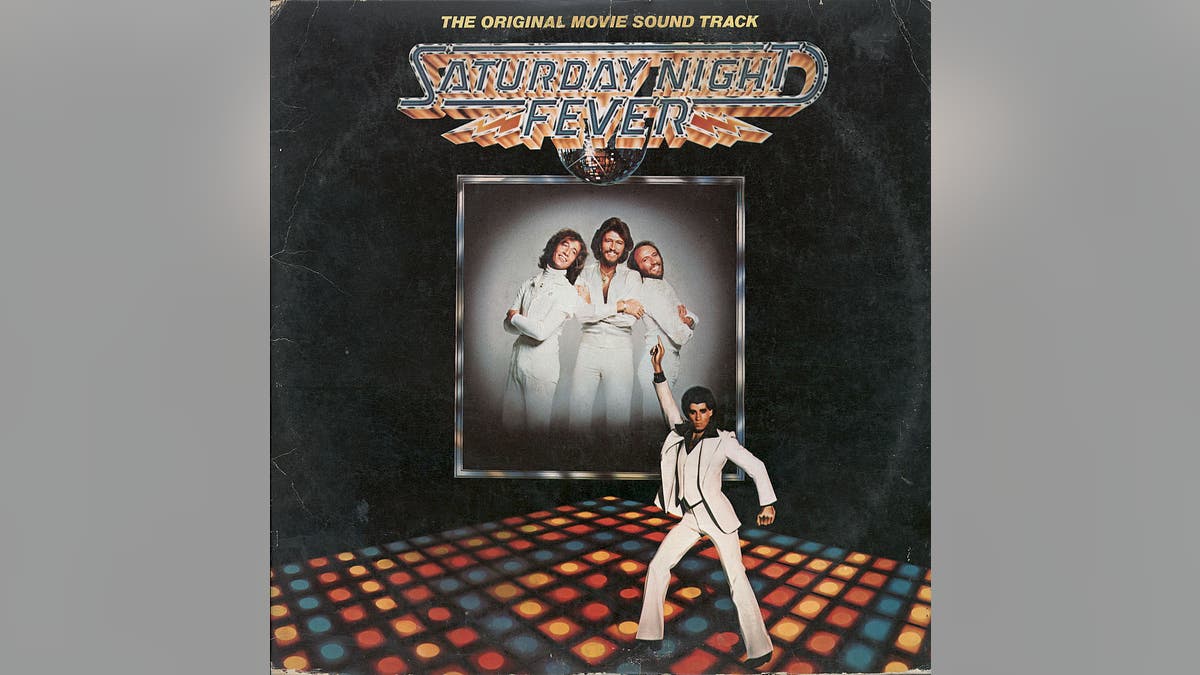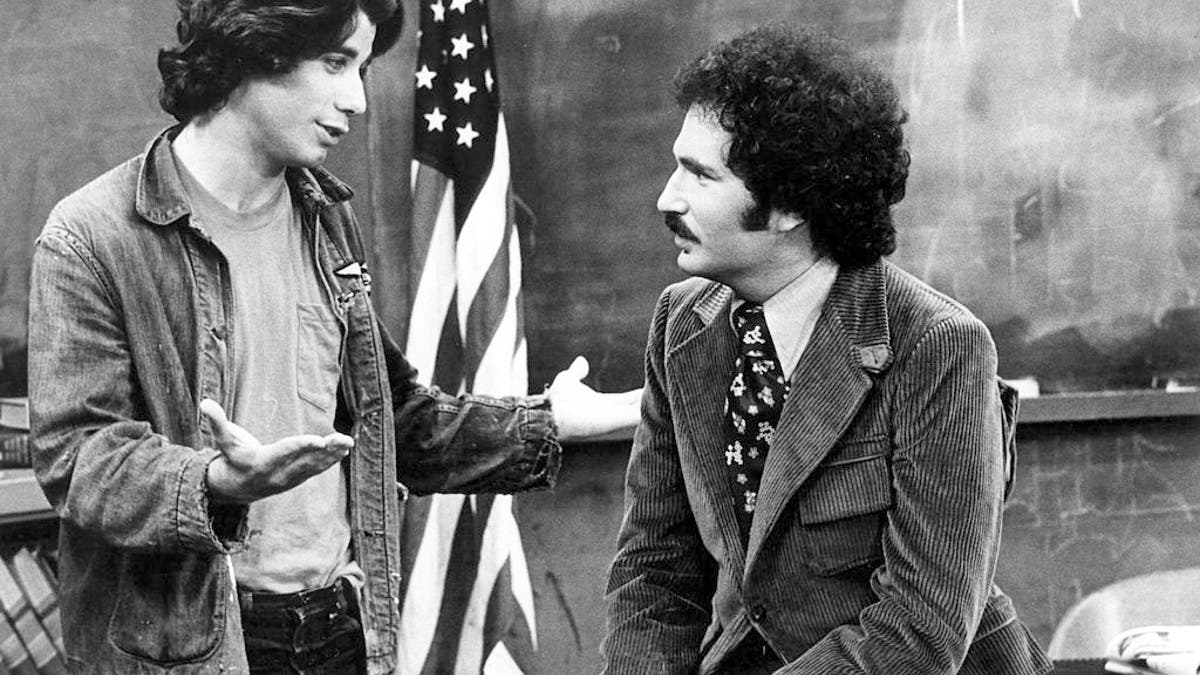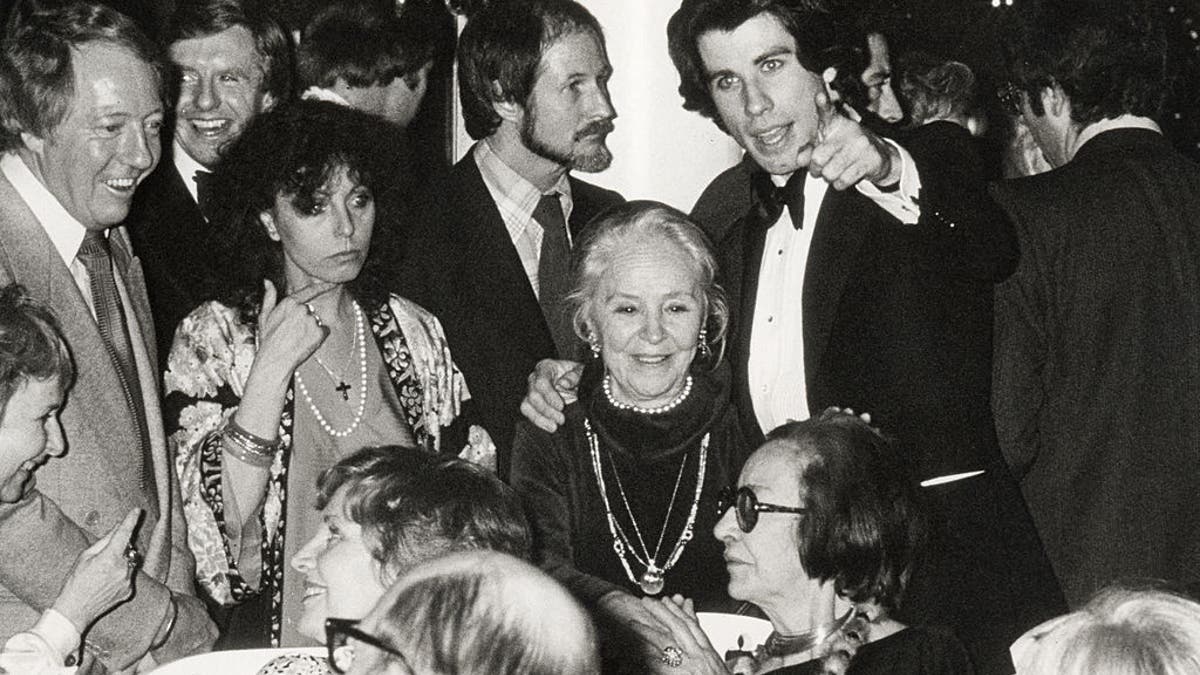Blake Jenner talks working with Bruce Willis and John Travolta on 'Paradise City'
Blake Jenner discusses working with Bruce Willis and John Travolta, and why he didn't ask them for advice.
"Saturday Night Fever," a sparkling 1970s silver-screen period piece that transcends generations with its pulsating soundtrack, dramatic disco dance scenes and timeless teenage coming-of-age story, made its world premiere on this day in history, Dec. 14, 1977.
The movie debuted at Mann’s Chinese Theater in Los Angeles before enjoying national distribution two days later.
"Well-cast, well-acted and well-directed, ‘Saturday Night Fever’ earned positive reviews from many critics, including the late Gene Siskel, who called it his favorite film ever," writes History.com.
ON THIS DAY IN HISTORY, DECEMBER 13, 1989, POP STAR TAYLOR SWIFT IS BORN IN PENNSYLVANIA
"But whatever its other cinematic merits, even the film’s strongest proponents would agree that it was the pulsing disco soundtrack of ‘Saturday Night Fever’ that made it a work of lasting historical significance."
The movie opens with one of the great "a star is born" moments in Hollywood history.

The movie "Saturday Night Fever," directed by John Badham. Seen here, John Travolta as Tony Manero on the dance floor of 2001 Odyssey discotheque. Screen capture, Paramount Pictures. (CBS via Getty Images)
John Travolta, lean, handsome and just 23 years old, with a majestic feathery pompadour, plays nightclub king Tony Manero.
He struts gloriously down the streets of Bay Ridge, Brooklyn, wearing an open-collar red shirt, black slacks and a black leather jacket, to the sway of the soundtrack title tune "Stayin’ Alive," as the opening credits roll.
CHRISTMAS TREE QUIZ! SEE HOW WELL YOU KNOW THESE FAMOUS CHRISTMAS TREES AND MORE
"Well, you can tell by the way I use my walk/I’m a woman’s man no time to talk," the Bee Gees sing as the heels of Manero’s shoes click on the asphalt and his arms swing to the beat.
"One minute into ‘Saturday Night Fever’ you know this picture is onto something, that it knows what it's talking about," Siskel, the celebrated movie critic, raved of the production.
The movie opens with one of the great "a star is born" moments in Hollywood history.
"Travolta on the dance floor is like a peacock on amphetamines. He struts like crazy."
Travolta was a goofy sitcom star at that point, known for his role as dim-wit Vinnie Barbarino in the television hit "Welcome Back, Kotter."

View of the cover of the soundtrack album from the film "Saturday Night Fever," 1977. Published by RSO Records, the album features a large, framed portrait of Australian pop group the Bee Gees as they overlook a photo of American actor John Travolta as he strikes a pose on a disco dance floor. (Blank Archives/Getty Images)
"Saturday Night Fever" made him an international celebrity.
Manero was an uncultured, black-sheep son of a struggling working-class Italian-American family who ascended to nobility on the dance floor of 2001 Odyssey, a real Bay Ridge nightclub.
The infectious soundtrack featured a string of radio hits from KC and the Sunshine Band ("Boogie Shoes"), Broadway star-turned-disco diva Yvonne Elliman ("If I Can’t Have You") and landmark period hit-maker The Trammps ("Disco Inferno").
The album was carried by a string of classic dance-club tunes by Australian act the Bee Gees including, in addition to the title track, "Night Fever," "Jive Talkin’" and "How Deep is Your Love," among others.
The "Saturday Night Fever" soundtrack remains one of the top-selling albums of all time, with more than 40 million units sold, according to Billboard.

Gabe Kaplan (right) played Gabe Kotter, the teacher of a class of delinquents called the Sweathogs at his former high school; Vinnie Barbarino (John Travolta) was his student. (ABC Photo Archives/Disney General Entertainment Content via Getty Images)
"Saturday Night Fever," the movie, was the first in a trio of Hollywood hits, buoyed by dancing and best-selling soundtracks, that made Travolta one of the biggest stars of the era.
It was followed in rapid succession by his roles as high school bad boy Danny Zuko in "Grease" (1978) and Houston roughneck Bud Davis in "Urban Cowboy" (1980).
"Saturday Night Fever," it turns out, was a pop-culture sensation that never should have been.
The movie was based on an article by British reporter Nik Cohn, "Tribal Rites of the New Saturday Night," that appeared in New York Magazine.
"One minute into 'Saturday Night Fever’ you know this picture is onto something." — Gene Siskel
"Vincent was the very best dancer in Bay Ridge," Cohn wrote on June 7, 1976.
"Everybody knew him. When Saturday night came 'round and he walked into 2001 Odyssey, all the other faces automatically fell back before him, cleared a space for him to float in, right at the very center of the dance floor."

John Travolta, Travolta's mother, and producer Robert Stigwood (far left) at a premiere after-party for "Saturday Night Fever" in December 1977. In beard is British rock journalist Nik Cohn. The hit movie is based on what proved years later to be a fabricated magazine article by Cohn. (Ron Galella/Ron Galella Collection via Getty Images)
The scene was recreated, almost down to the dance moves, in the movie, with "Vincent" replaced by Travolta’s Manero.
The Brit later admitted he fabricated the entire story after witnessing a fight outside the nightclub one night.
CLICK HERE TO SIGN UP FOR OUR LIFESTYLE NEWSLETTER
"My story was a fraud," Cohn told The New York Times in 1996.
"I’d only recently arrived in New York. Far from being steeped in Brooklyn street life, I hardly knew the place. As for Vincent, my story’s hero, he was largely inspired by a Shepherd’s Bush mod whom I’d known in the '60s, a one-time king of Goldhawk road."
"Saturday Night Fever" was based on a magazine article by British reporter Nik Cohn that proved to be a fraud.
Despite its manufactured origins, the story has stood the test of time.
"'Saturday Night Fever' has endured … because its narrative is as supple as the 23-year-old John Travolta was," Entertainment Weekly wrote in an insightful 1990s retrospective, soon after the fraud was revealed.
CLICK HERE TO GET THE FOX NEWS APP
It's "the story of a working-class palooka who thinks he’s got only one special thing — his dancing — and his struggle to understand if being a man means using it or transcending it, remaining a boy or growing up, behaving as a lover, a lout, or a gentleman."

























